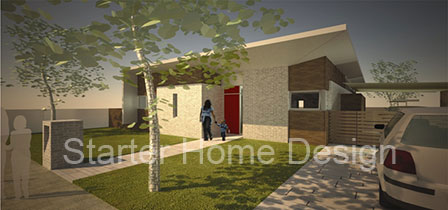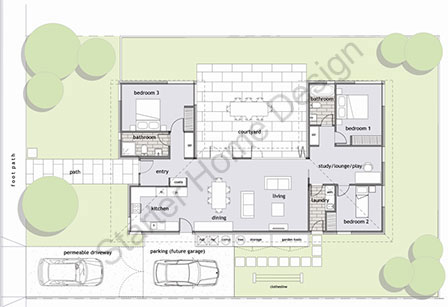Lighter cladding and your TC3 repair or rebuild
If your home is in technical category 3 and your foundations and home need to be repaired, or substantially rebuilt, you need to consider replacing heavy wall and roof claddings with lighter materials.
MBIE has published technical guidance for foundation repairs and rebuilds for residential properties in Canterbury's green zone foundation technical category 3 (TC3).
In most cases homes with lighter cladding and roofing material performed reasonably well in the Canterbury earthquake sequence. Lighter claddings reduce the weight of your home and the load placed on foundations. They will make your home more resilient in future earthquakes and are likely to be less costly to repair.
Lighter wall and roof claddings
If you are looking for lighter claddings ask product suppliers for wall cladding with a mass no greater than 30kg/m2 and roof cladding that doesn’t exceed 20kg/m2.
Common types of lighter cladding include:
- Weatherboards – These can be made of timber, fibre cement, PVC, or aluminium. Some of these, such as PVC and aluminium, can come pre-finished and are lower maintenance than materials which require painting. You can also choose a timber species such as cedar or macrocarpa, which can be left uncoated and involve less maintenance than painted weatherboard.
- Profiled metal – There is a wide range of profiles to choose from. Metal pre-finished with colour or left in a ‘natural’ look could be considered low maintenance. There are various grades and substrates (zincalume and aluminium being the main ones) to cope with different environments, including coastal.
- Sheet materials – The two obvious ones are plywood and fibre cement. There are numerous variations and the plywood comes in various face treatments (e.g. flat, grooved, rough sawn). There are many ways to treat the sheets aesthetically. Plywood can be made to look like vertical board and batten and stained or painted. Fibre cement sheets are usually painted or finished with a reinforced plaster system.
- EIFS (exterior insulation and finishing system) – Again there are numerous systems but all have a substrate, usually a polystyrene panel and are then finished with a painted reinforced plaster system.
There are various other cladding systems including aluminium composite panels and zinc panels. Common types of lighter roof:
- sheet metal and metal tile roofs, either pre-painted or painted by the homeowner
- other materials that don’t exceed 20kg/m2.
So, there is a huge range of options for lighter cladding including options that address any concern you may have about maintenance or aesthetic appeal. Think about what you want, look around and discuss the options with your designer.
Think about the future
Rebuilding is an opportunity to create a healthy and resilient home that meets your future needs. Think about the size, location and features that you want in a home and consider how to reduce your home’s running costs using modern heating, insulation and lighting options. Good home design doesn’t necessarily mean big dollars.
Examples of house designs that use lighter cladding:


A design by Stephen Smith, of S3 Architects Ltd, which is clad in vertical weatherboards of western red cedar finished in wood oil. Pine board and batten cladding would be another, less costly, option. Stephen Smith was the supreme winner of Building and Housing’s Starter Home design competition.